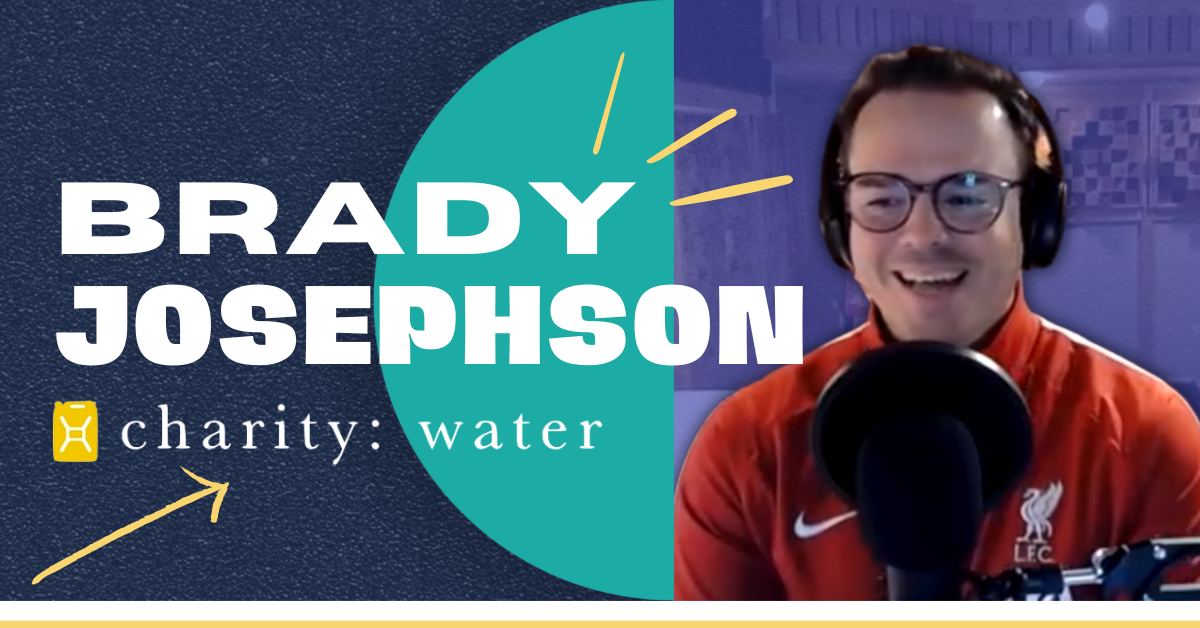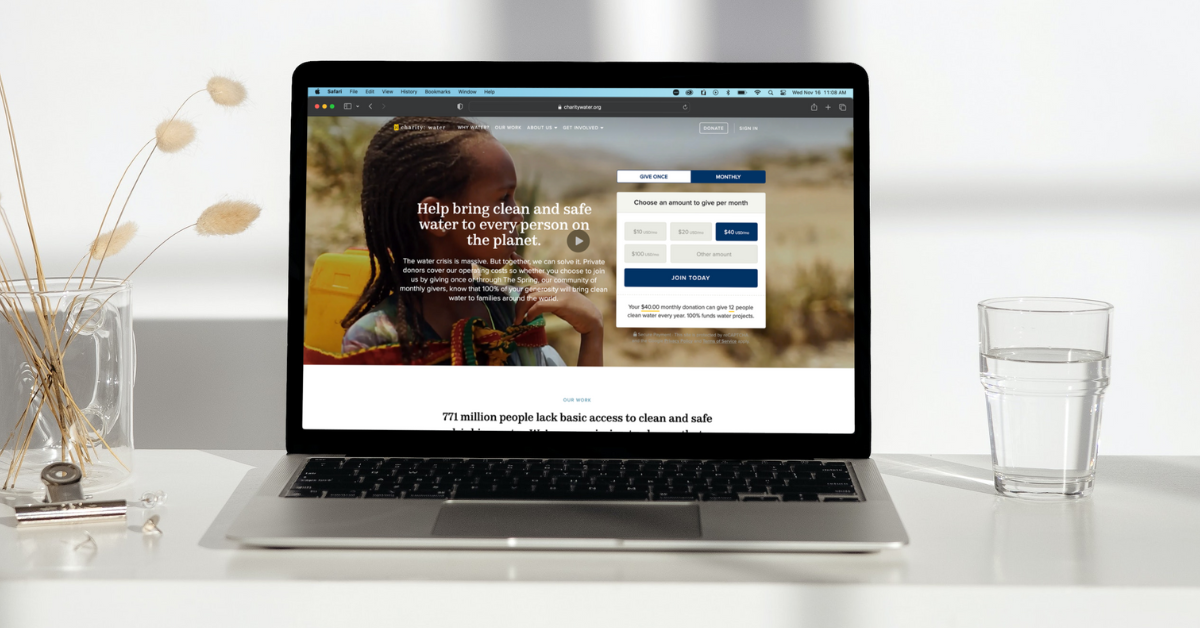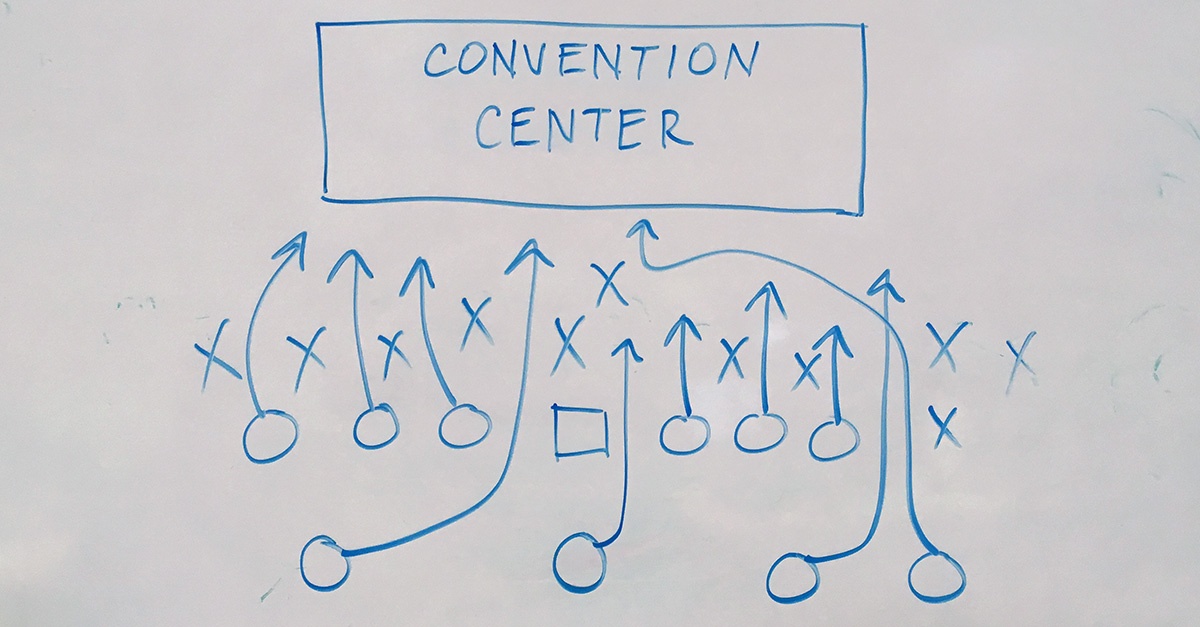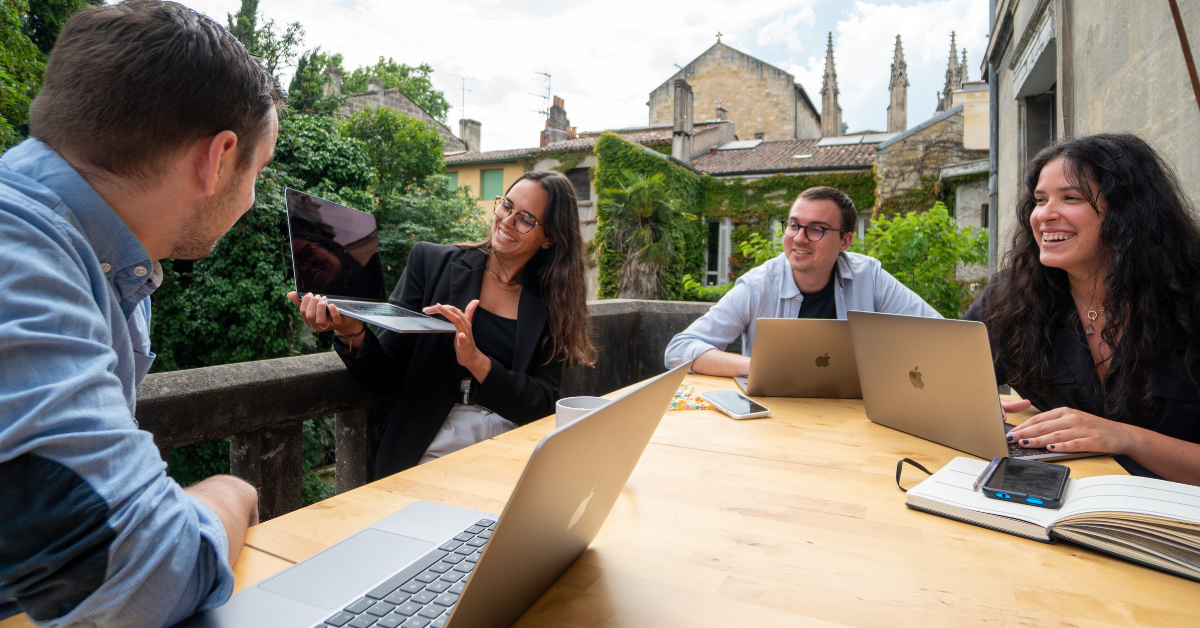
How Brady Josephson tests initiatives at charity: water
When it comes to nonprofit brands, charity: water stands apart largely because of its powerful narratives. Their founder, Scott Harrison, tells the story of how he launched the movement in his book, Thirst. But charity: water also creates narratives around the people they serve and the way donors can follow their gift all the way to its impact.
But just as important as storytelling is charity: water’s commitment to testing new initiatives and staying ahead of the curve. Brady Josephson, marketing & growth lead at charity: water, is adamant that even large organizations need to be open to risk. He says, “More things fail than work, generally speaking.”
This isn’t a call to inaction but rather the opposite. If charity: water can make mistakes, that means all of us can take a deep breath, relax, and then try something outside the norm.
Everyone’s organization is different, which means their audiences are different. And this means there isn’t a cookie cutter campaign for everyone. The best way forward is to test new ideas, learn, and then adjust.
Testing, testing, testing
Josephson recently sat down with Feathr’s VP of Marketing, Noah Barnett, and gave away some of his secrets for success. And one of the most important processes for Josephson’s team is the way that they untangle their marketing tests.
A lot of marketers are trying things and then measuring how those things are performing. But at charity: water a lot of work goes into defining what kinds of tests are useful and what type of information can be gained from them.
Josephson distinguishes three different kinds of tests, which we’re going to dive into below.
Tries
Trying something is the most basic form of a test. This is where you’re throwing everything at the wall and you’re seeing what sticks.
A lot of younger marketing teams are going to have to start from square one, and this is exactly that. But even larger organizations like charity: water are often trying things to gather insights about what they should be expanding into.
There are so many phrases around the idea that if you don't try, you can't succeed. And all of them are true. We think it's way better to take a risk than to always feel secure and accept the status quo.
A few examples of tries:
- Launching a newsletter.
- Sending digital ads to email unsubscribers.
Pilots
This is exactly like a TV pilot. You’re investing time and energy to produce a cohesive result. But you’re only going to do it for a selected amount of time, and once the pilot has run its course, then your team can process the results and determine whether to reinvest.
The important thing is to have strict timelines and budgets on the project. Instead of this being just a one-off campaign, you may be piloting something for a quarter or even a whole year. The point is to see the project through before adding or cutting funding.
This is one step up from trying. You have constraints and limitations on what success would look like, but there isn’t a control group and you’re really just finding out if this is a path that your organization wants to walk further down.
A few examples of pilots:
- Direct mail during the holidays.
- A TV ad initiative.
- Traveling to live events.

Experiments
This is the most scientific and rigorous of the types of tests you can organize as a team. There’s always going to be a control group and a treatment group or groups. And you’ll need to frame a hypothesis about the expected results.
Then you measure the results and find if they’re statistically significant. Josephson has found that a large majority of these tests are inconclusive. But the important thing is that after you’ve tested similar things and found them inconclusive, it may be time to redirect energy and money toward something that is leading to significant results.
For example, charity: water ran multiple experiments adjusting suggested donations on some of their pages. After multiple experiments with insignificant statistical results, he determined that it was far more worth the effort to spend time and energy adjusting the copy on call-to-action buttons.
One insignificant experiment may feel like a waste of time, but often by following the process through, you may still learn something as long as you were listening the whole time.
A few examples of experiments:
- Button copy.
- Email subject lines.
- Landing page creatives.
“Take chances, make mistakes, and get messy!”
This quote from Miss Frizzle in the Magic School Bus has become a mantra for our marketing team at Feathr.
You aren’t going to get much better waiting for the perfect moment to come your way or by only doing the safe thing every single time. I’m not sure if you’ve heard the saying, “You’ve got to crack a few eggs to make an omelet,” but it’s true, very little is going to happen if you don’t take risks! So we hope you get out there and start cracking some eggs!
As people, we learn so much more from our mistakes than from our successes. Please don’t take this as a recommendation blow $10k on something that doesn’t work, but with Josephson’s framework of trying, piloting, and experimenting, you can begin to test new ideas in a controlled way.
And the things you learn through this process might change the trajectory of your organization!
You May Also Like
These Related Stories

5 ways to use CRM data to increase your end-of-year giving

Modern Marketing Playbook: Loyalty Campaigns
